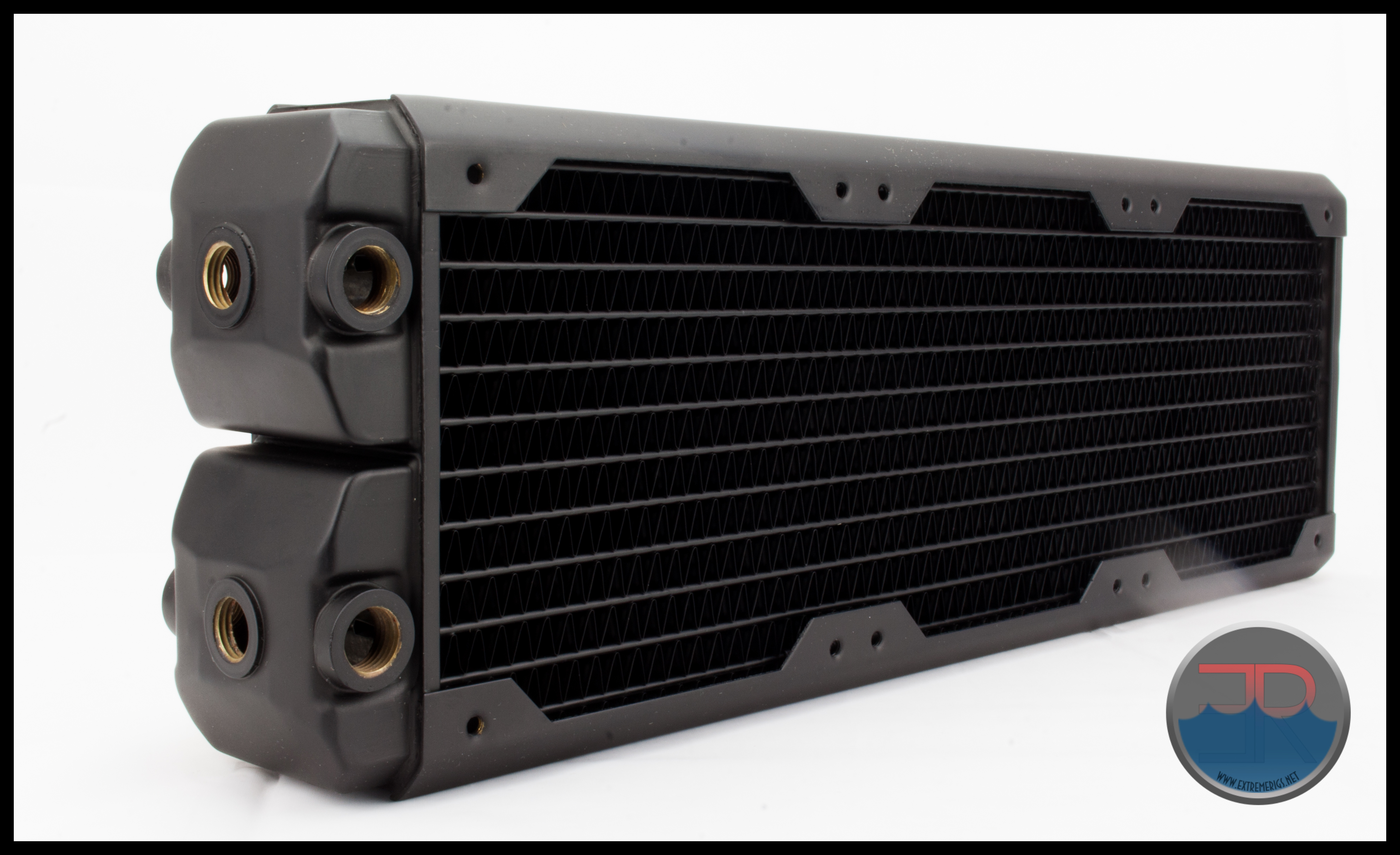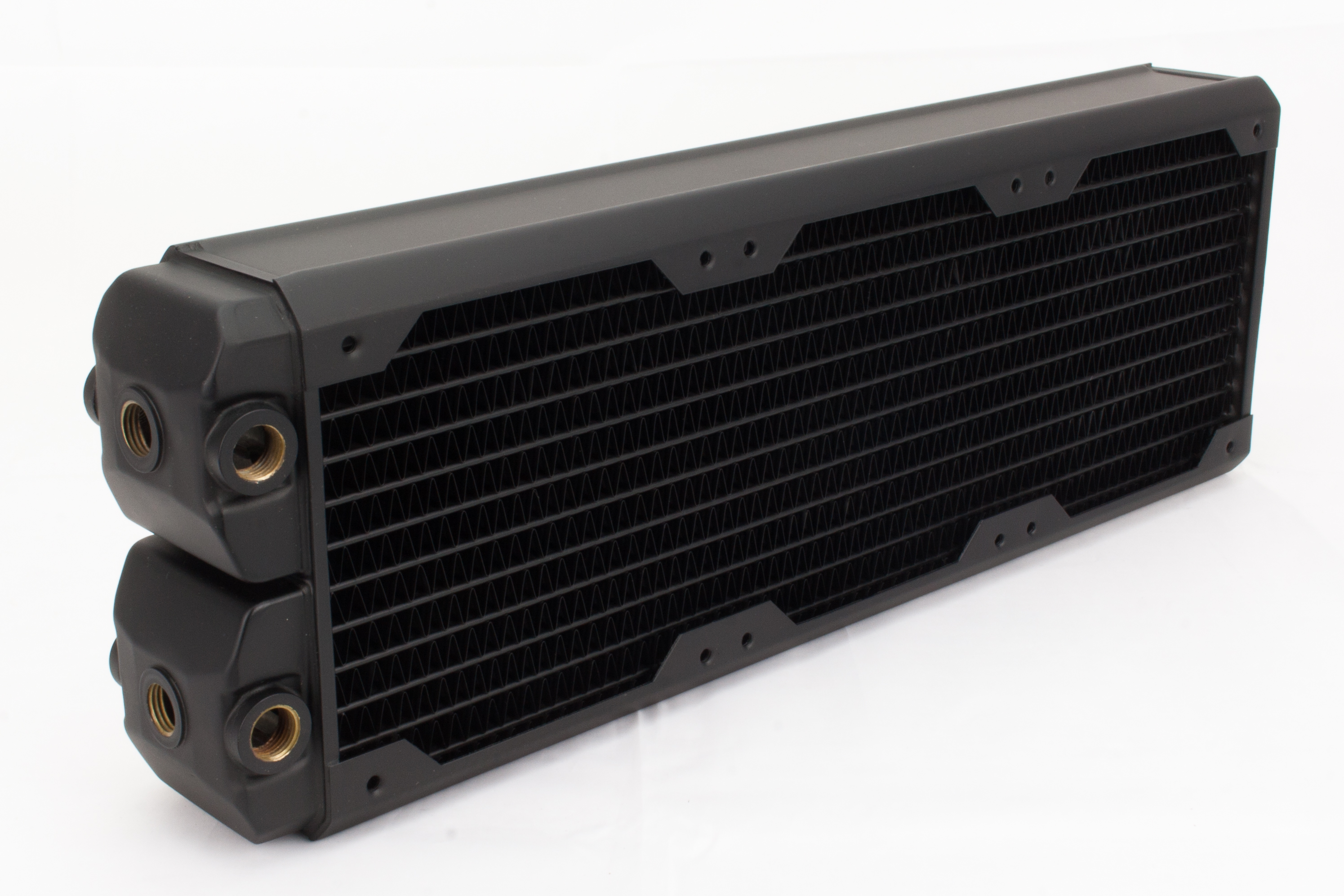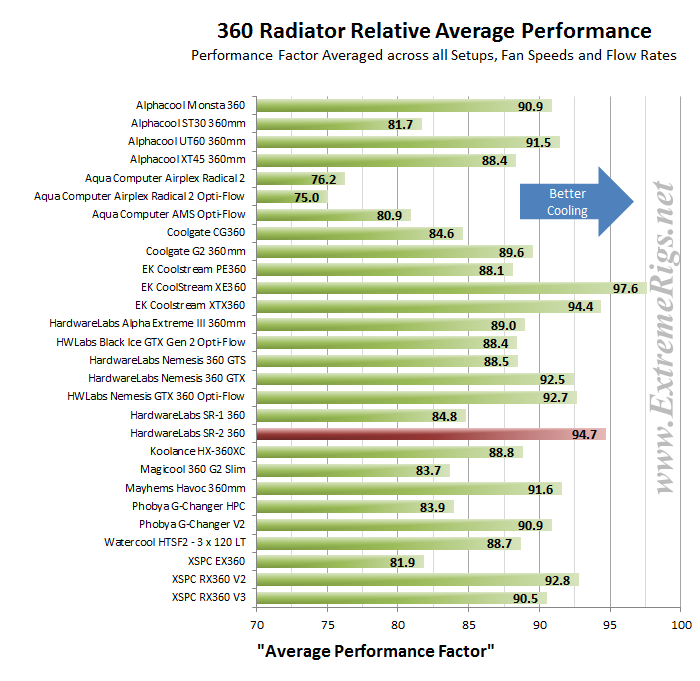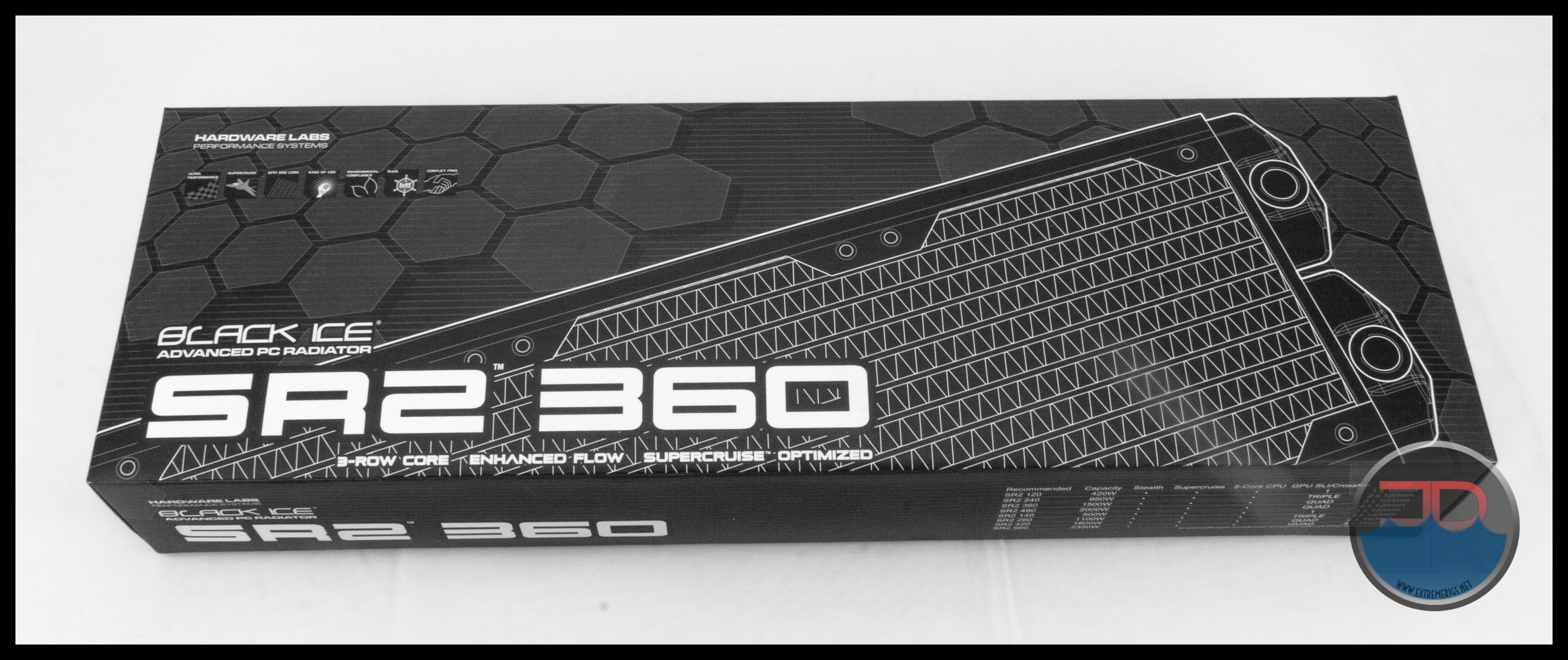Thermal Performance
Thermal Performance scores are derived from the relevant Performance Factor scores. We set this scale with 75% and below as the 0 mark, with each 2.5% increase from 75% in relative performance adding 0.5 to the awarded performance score.
Push Only Thermal Performance – 4.5/5
The SR2’s performed awesomely, and if it wasn’t for the XE’s superlative performance it would have had a clean sweep here.
Push/Pull Thermal Performance – 4/5
As we have seen in the data the SR2 also (somewhat surprisingly) performed very well in Push/Pull. Its Push/Pull APF result of 93.5 gave a thermal performance score of 4. This is an excellent result for a low FPI radiator.
Overall Thermal Performance – 4/5
The Master Performance score of 94.7 gives a score of 4/5. This is a great score that would have won if the XE hadn’t launched immediately afterwards.
Features & Quality – 4.5/5
The SR2 Multi-Port 360mm has HWLabs renowned build quality built into its DNA. It feels solid and weighty, is well constructed and the carbon black finish is excellent.
The extra ports introduced on this new model are welcome, and will surely be an irresistible lure to many rig builders. These extra ports are what HWLabs radiators have been missing for years. With a slight tweak to recess the plugs for a flush fit then the design this will be perfect. If a dedicated fill/drain port was included on the return tank end the SR2 might have scored a 5/5 for features and quality.
The inclusion of tube protection plates is a welcome feature.
The core of the SR2 is slightly biased towards low to medium speed fans, but still performs extremely well with higher fan speeds. This makes it a versatile performer
With a low FPI count the SR2 will need cleaning less often than most of the radiators in the test group.
The SR2’s low restriction level mean could mean less pump power is required when planning out your loop.

Summary – 4.5/5
The Hardware Labs SR2 Multi-Port is an excellent thermal performer when set up in Push Only configuration. Its Push/Pull performance is also outstanding making the SR2 an excellent all-rounder.
The design, build quality and finish are excellent. The review sample was perfect and there is nothing to fault.
The SR2 Multi-Port really has no drawbacks, and should be at the top of your list of rads to consider if you’re in the market to purchase.
Only the single port model is available at the time of writing, but HWLabs have confirmed the SR2 will be released, so as soon as we know a release date and pricing (which is expected to be similar or less) we’ll update with a Press Release.
If the single port version suits your build, it has the same great performance and is currently available.
Where to buy: Single Port Version – Performance PCs – $123, Multi-Port version is not yet released.














What are these “Opti-flow” versions of radiators? I can find no such variant on Hardware Labs website, only the “XFlow” variety.
Hey Thomas – the “optiflow” refers to radiators where the direction of coolant or airflow matters. “Optiflow” means that the “best” orientation is being tested. It only applies therefore to certain radiators with certain internal structures such as the Nemesis GTX or Black Ice GTX. The SR2 does not have any such directionality 🙂
Also on more thing to add – optiflow significantly helps lower flow rates when air flow is higher. If you run low airflow or high coolant flow then a directional radiator can be more of a pain than a gain.
Ah, thank you!
So between the SR2 and Nemesis GTX which performs better seems to be entirely down to the particulars of your setup then (as the Nemesis seems to straddle the SR2 results with and without opti-flow), will have to reread the Nemesis review as I don’t remember seeing anything about this issue.
Great work, love these reviews and the roundup comparisons (any chance there will be a 140mm variant of it some time too?).
Awesome review thanks for all the hard work!!
Nice review man,
I gotta get me on of this multiport when it comes out 🙂
Awesome review, I really want one too.
Great review as always
[…] Nemesis GTS 360 Radiator Hardware Labs Nemesis GTX 360 Radiator Hardware Labs SR-1 360 Radiator Hardware Labs SR2 360 Radiator Koolance HX-360XC 360 Radiator Magicool G2 Slim 360 Radiator Mayhem’s Havoc 360 Radiator […]
[…] a close look at the SR2 240 MP from Hardware Labs. We took a look a pre-production sample of the 360mm version for the round-up, so if the 360mm size is more your flavor be sure to check out it’s full review […]
If you don’t mind? What advice do you have to offer concerning the first model of SR2 radiator performance as compared to the SR2-MP? Is this simply a feature added change with the same performance? Or an attempt at both adding features while improving performance?
The SR2 and SR2 MP have the same core – there *should* be no performance difference and it should only be additional features 🙂
[…] up is the SR2 420 MP from Hardware Labs. We’ve already reviewed the 240 mm and 360mm versions of the SR2 MultiPort so be sure to check them out after you’ve finished reading this […]
[…] for sub-800 rpm ultra-stealth fans” which proved to be be an accurate statement when we tested the 360mm version earlier in the year. Will the 140mm perform as well ? We’ll find out how it performs and […]
Comments are closed.